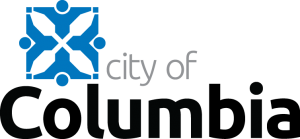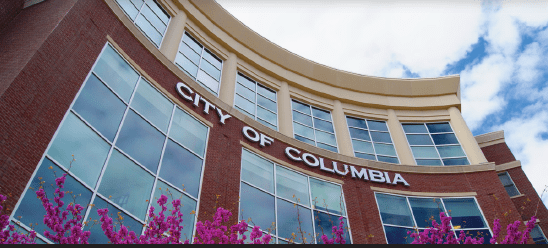
Arts & Economic Prosperity 6
Arts & Economic Prosperity 6 is here! The City of Columbia was one of 373 communities and regions across the country to participate in the Arts & Economic Prosperity 6 national economic impact study (AEP6), conducted by Americans for the Arts. On this page, read Columbia’s full report and learn more about the impact of the arts on Columbia’s local economy.
City of Columbia reports
Introduction
From coast to coast, America’s nonprofit arts and culture organizations are making their communities better places to live and work by beautifying cities, fueling creativity, celebrating diversity, and bringing joy to residents.
Arts and culture organizations are also businesses. They employ people locally, purchase goods and services from nearby businesses, and produce authentic cultural experiences that are magnets for visitors and new residents.
Event-related spending by their audiences generates valuable revenue for local merchants — dining in a nearby restaurant, paying to park or for a rideshare, shopping at local retail stores, and enjoying dessert after a show — a value-add few industries can compete with.
These actions, in turn, support jobs, generate household income, and generate tax revenues for the government that more than offset the public’s arts and culture sector investment.
Columbia's study highlights
In the City of Columbia, the nonprofit arts and culture sector generated $18.27 million in economic activity during 2022 — $10.23 million in spending by arts and culture organizations and an additional $8.04 million in event-related expenditures by their audiences.
That economic activity supported 592 jobs, provided $14.12 million in personal income to residents, and generated $3.73 million in tax revenue to local, state, and federal governments.
This study sends a strong signal that, even in the aftermath of the COVID-19 pandemic and the resulting recession, the nonprofit arts and culture is a formidable industry. AEP6 demonstrates that when we support the arts, we are investing in Columbia’s economic and community well-being.
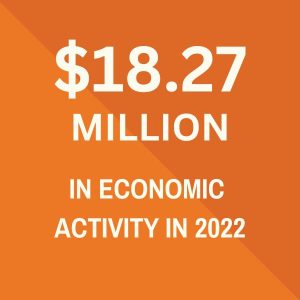
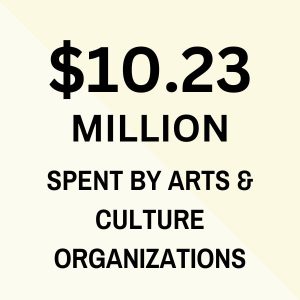
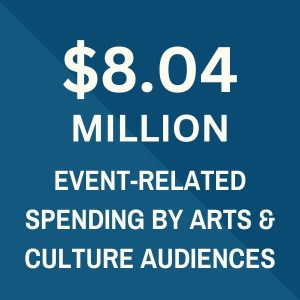

Economic Impact of spending by organizations
Arts and cultural organizations are valued members of the business community. They employ people locally, purchase goods and services from within the community, are members of the Chamber of Commerce, and promote the region.
During 2022, the 33 participating nonprofit arts and culture organizations in Columbia reported aggregate expenditures of $10.23 million. These direct expenditures generated total economic impacts (i.e., direct, indirect, and induced) of 477 jobs, $10.33 million in resident household income, and $2.66 million in total tax revenue.
This is the impact of just organizations — festivals, performing and visual arts organizations, history and heritage centers, public art programs, museums, community programs, and more. It does not take into consideration the spending by their audiences.
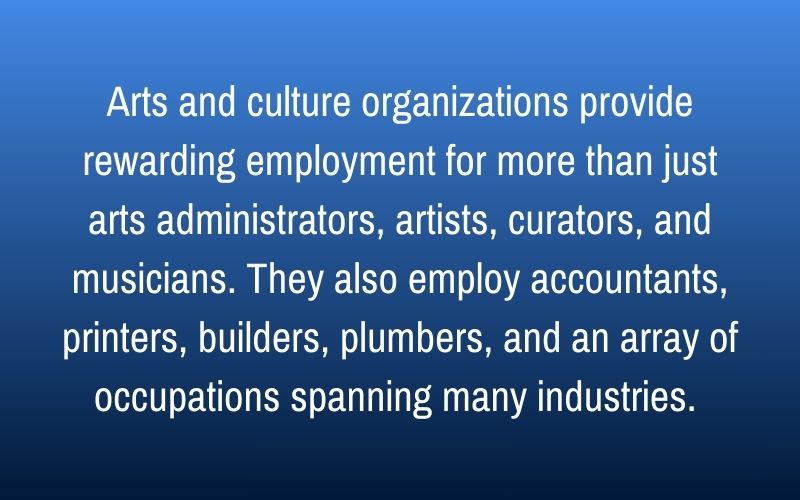
Economic impact of event-related audience spending
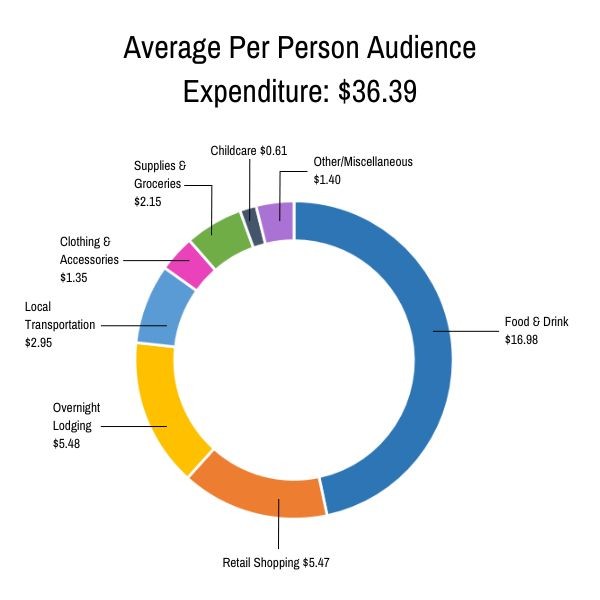
When people attend a cultural event, they often make an outing of it — dining at a restaurant, paying for parking or public transportation, enjoying dessert after the show, and returning home to pay for child or pet care.
Sometimes it includes travel and paying for overnight lodging. Local businesses that cater to arts and culture audiences reap the rewards of this economic activity.
In the City of Columbia, the 33 participating nonprofit arts and culture organizations reported that the aggregate attendance to their in-person events totaled 220,580 during 2022. Event-related spending by these arts audiences totaled $8.04 million in Columbia during fiscal year 2022, excluding both the cost of admission as well as the cost of food and drink that was purchased on-site during the event. The typical attendee spends $36.39 per person per event, in addition to the cost of event admission.
When a community attracts nonlocal arts attendees and cultural tourists, it harnesses significant economic rewards.
In addition to spending data, we asked each of the survey respondents to provide their home zip code. Attendees living within Boone County were considered local; those who lived outside Boone County were categorized as nonlocal. Our sample revealed that 17.3 percent of attendees traveled from outside of the county (nonlocal), and 82.7 percent of attendees resided within the county (local). Nonlocal attendees spend an average of 300 percent more than local attendees as a result of attending an arts event ($95.94 vs. $23.98, respectively).


Nonlocal attendees were asked about the purpose of their visit. 87.2 percent indicated that the primary purpose of their visit was “specifically to attend this arts event,” demonstrating the power of the arts to attract visitors to the community. As part of the survey, local attendees were asked about what they would have done if the arts event that they were attending was not taking place: 34.8 percent said they would have “traveled to a different community to attend a similar cultural event.” If Columbia fails to provide a variety of artistic and cultural experiences, not only will it fail to attract new dollars from cultural tourists, it will also lose the discretionary spending of its own residents who will travel elsewhere for a similar arts experience.

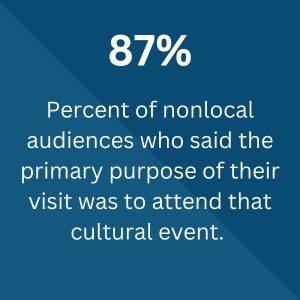
Social Impact
Beyond its economic and financial impacts, arts and culture provide social contributions that benefit the wider community, such as neighborhood pride and cultural identity.

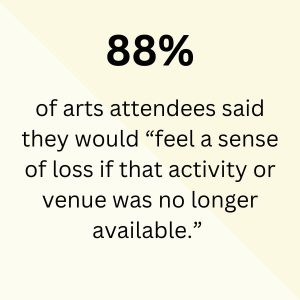
Conclusion
AEP6 changes the conversation about nonprofit arts and culture organizations from that of a charity — worthy of funding in prosperous economic times but hard to justify in challenging times — to that of an industry with an economic and social impact.
Arts and culture are a fundamental component of livable communities — beautifying cities and towns, bringing joy to residents, and celebrating diverse cultural expressions and traditions. It powers the creative communities where people want to live and work, where entrepreneurs and innovation thrive, and where businesses and nighttime economies flourish. Shared cultural experiences strengthen a sense of belonging and community pride.
Arts & Economic Prosperity 6 delivers a clear and welcome message.
When communities invest in arts and culture, they are not investing in community development at the expense of economic development.
Rather, they are investing in an industry that stimulates the economy, supports local jobs, and contributes to building healthy, vibrant, and more livable communities. When we support the arts, we are investing in both Columbia’s economic and community well-being.
About the study
Americans for the Arts conducted AEP6 to document the economic and social benefits of the nation’s nonprofit arts and culture industry. The study was conducted in 373 diverse communities and regions across the country, representing all 50 states and Puerto Rico.
The City of Columbia Office of Cultural Affairs joined the study on behalf of the City of Columbia. For additional information including the national report, summaries for the 373 communities, an online calculator, and a description of the project methodology, visit aep6.americansforthearts.org.
